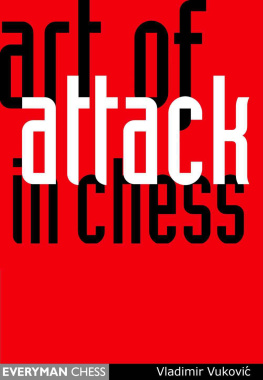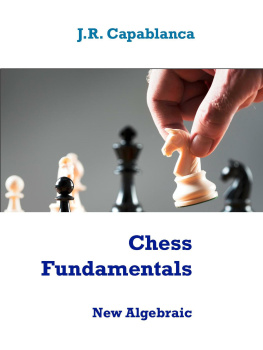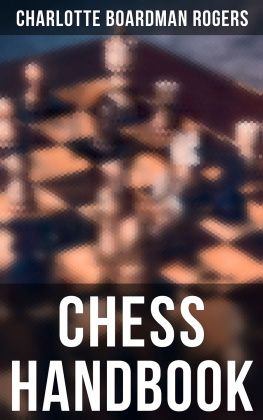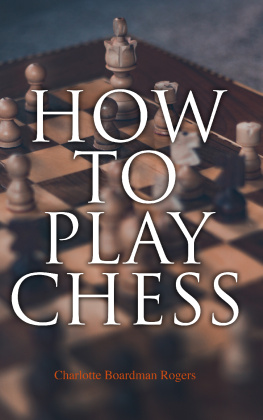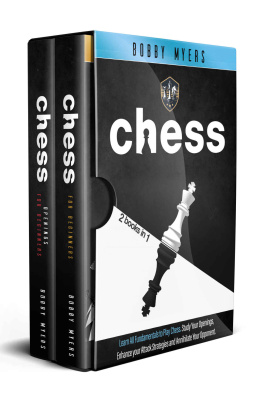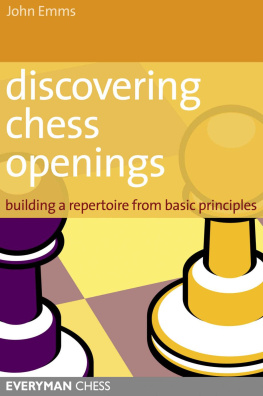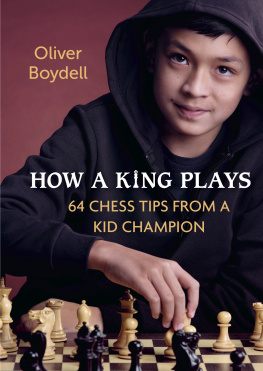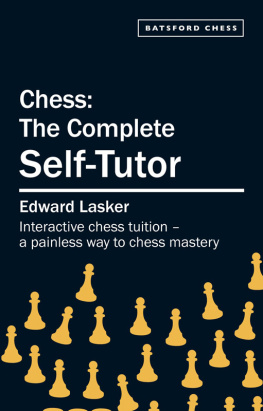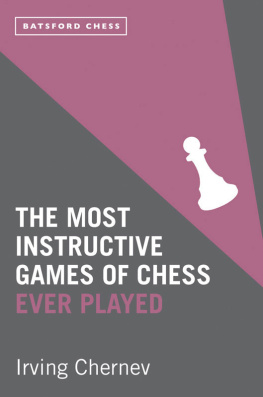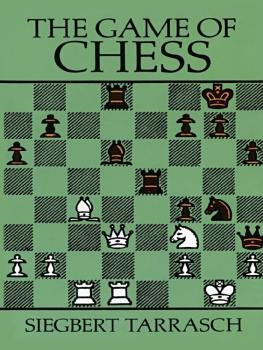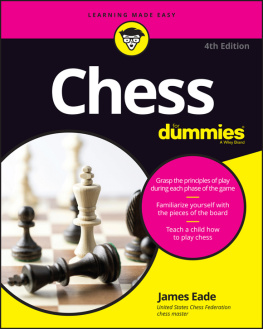Vladimir Vuković - Art of Attack in Chess
Here you can read online Vladimir Vuković - Art of Attack in Chess full text of the book (entire story) in english for free. Download pdf and epub, get meaning, cover and reviews about this ebook. year: 2012, publisher: Everyman Chess, genre: Children. Description of the work, (preface) as well as reviews are available. Best literature library LitArk.com created for fans of good reading and offers a wide selection of genres:
Romance novel
Science fiction
Adventure
Detective
Science
History
Home and family
Prose
Art
Politics
Computer
Non-fiction
Religion
Business
Children
Humor
Choose a favorite category and find really read worthwhile books. Enjoy immersion in the world of imagination, feel the emotions of the characters or learn something new for yourself, make an fascinating discovery.
- Book:Art of Attack in Chess
- Author:
- Publisher:Everyman Chess
- Genre:
- Year:2012
- Rating:4 / 5
- Favourites:Add to favourites
- Your mark:
- 80
- 1
- 2
- 3
- 4
- 5
Art of Attack in Chess: summary, description and annotation
We offer to read an annotation, description, summary or preface (depends on what the author of the book "Art of Attack in Chess" wrote himself). If you haven't found the necessary information about the book — write in the comments, we will try to find it.
Art of Attack in Chess — read online for free the complete book (whole text) full work
Below is the text of the book, divided by pages. System saving the place of the last page read, allows you to conveniently read the book "Art of Attack in Chess" online for free, without having to search again every time where you left off. Put a bookmark, and you can go to the page where you finished reading at any time.
Font size:
Interval:
Bookmark:

First published in 2008 by Gloucester Publishers plc.
Northburgh House, 10 Northburgh Street, London EC1V 0AT.
Copyright 2008 Vladimir Vukovi
The right of Vladimir Vukovi to be identified as the author of this work has been asserted in accordance with the Copyrights, Designs and Patents Act 1988.
All rights reserved. No part of this work may be reproduced, or transmitted in any form or by any means, without prior permission of the publisher.
British Library Cataloguing-in-Publication Data
A catalogue record for this book is available from the British Library.
ISBN: 978 1 85744 771 2
All other sales enquiries should be directed to Everyman Chess, Northburgh House, 10 Northburgh Street, London EC1V 0AT
tel: 020 7253 7887; fax: 020 7490 3708
email: info@everymanchess.com
website: www.everymanchess.com
Everyman is the registered trade mark of Random House Inc. and is used in this work under licence from Random House Inc.
Everyman Chess Series
Chief Advisor: Byron Jacobs
Commissioning editor: John Emms
Assistant Editor: Richard Palliser
Cover design by Horacio Monteverde
Contents
Preface by John Nunn
Attacking the enemy king is one of the most exciting parts of chess, but it is also one of the hardest to play accurately. Every chess player has had the experience of seeing a promising-looking attack crumble into dust, whereupon the enemy counter-attack sweeps aside everything in its path. Vukovis excellent book The Art of Attack in Chess is a thought-provoking attempt to explain why some attacks succeed while other fail to reach their goal. The author himself points out that not everything in chess can be reduced to a set of rules, but the general principles he establishes in this book provide excellent guidance on when to launch an attack and how to ensure that it has the maximum chance of success.
As usual with classic books I have edited. I will take a little time to explain exactly how I have prepared this new edition. First and foremost is the conversion to algebraic notation. In addition to this, I have added 128 extra diagrams and in some cases, where it seemed appropriate, I have added further moves from the quoted games (for example, by giving the actual finish instead of and White won in another ten moves). I have lightly edited the rather ponderous English of the original translation, and brought the method of displaying variations into line with current practice. The index of the original book included only complete games, but I have also indexed the game excerpts. In two of the complete games, Alekhine-Asztalos and Alekhine-Kmoch, I have brought the moves of the game into line with the move-order given in the original tournament books.
Introduction
Action is the essential basis on which the game of chess is founded and any action which contains a threat i.e. attack in its widest sense stands out as a prominent feature of the game. To the outside observer, a chess game is dominated by the conflict between the two players. The ultimate aim of each player is, as a rule, the mating of the opponents king, and an action with this aim, whether it is direct or indirect, is called an attack (in a narrower sense of the word) or a mating attack; that is the subject of this book.
Being the most important action in chess and the central element of the game in ancient times, attack appears at all stages of the games development and in various forms of perfection. Moreover, it can be said that the reforms which have been made in the rules of chess have always been in the direction of increasing and stimulating the opportunities for attack.
The great reform of c. 1485, which created modern European chess, was particularly responsible for opening up new opportunities for attack and ushered in a period of rich development in chess technique. For three centuries of chess history, attack predominated over defence in the practice of the great players, and mastery at that time meant skill in conducting an attack. Only with Philidor did the first positional ideas appear, and with them more mature defensive strategies; these were to find in Steinitz a century later a legislator of genius.
During the classic era of chess from Morphy to Steinitz and on to Lasker the value placed on attack gradually decreased, for with greater positional understanding the foundations were also provided for the perfection of defensive technique. This, however, was followed by a new period in which Capablanca, and particularly Alekhine, perfected the technique of attack, above all that of the attack on the castled position, founded on exact positional play. With Alekhine the aggressive and dynamic style of play reached a zenith; in the period which followed the tide again turned away gradually from the risks of the direct attack in search of new paths. The main reason for this is not to be found in any weakness inherent in the attacking style, but in the simple fact that, given the conditions of present-day tournaments, it is more profitable and advantageous to make a study of openings. Now, it must be understood that the present theory of openings represents a detailed development of Nimzowitschs ideas concerning the central squares. There are still many gaps to be filled and there is a wealth of opportunity for innovation; as a result, great masters are inclined to concern themselves intensively with openings and to opt for a safety-first style. When this source of opening innovations begins to dry up, the problem of attack will present itself once more. The time may even come when the principles on which Alekhine built up his attacks will be completely understood, and those ideas which in the case of Alekhine had the appearance of a spark of genius will take on the more approachable aspect of attacking technique. It will be more convenient to discuss these questions at the end of the book. At this point it should be enough to point out that there exists an extremely large group of chess players, who are no longer beginners nor, on the other hand, masters or point-hunters, but players who aim primarily at deriving an aesthetic satisfaction from the game. For such players an attacking game is more attractive than positional technique and they will continue to attack regardless of risk, for their stormy contests are not going to be noted down in theoretical textbooks. So why should such players not become acquainted with the general principles of attack and why should they not perfect themselves in that style of chess with which they are most at home?
Various kinds of attack
We have said that we shall deal with attack in its narrower, or proper, sense, where it involves a direct or indirect threat to the opponents king. Attacks of this kind can be distinguished according to the following categories.
Font size:
Interval:
Bookmark:
Similar books «Art of Attack in Chess»
Look at similar books to Art of Attack in Chess. We have selected literature similar in name and meaning in the hope of providing readers with more options to find new, interesting, not yet read works.
Discussion, reviews of the book Art of Attack in Chess and just readers' own opinions. Leave your comments, write what you think about the work, its meaning or the main characters. Specify what exactly you liked and what you didn't like, and why you think so.

